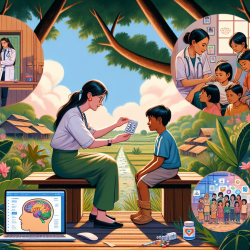Understanding Stigma: Helping Practitioners Support Children on ART in Cambodia
As a practitioner working with children on antiretroviral treatment (ART), understanding the complexities of stigma is crucial. A recent study, "Perceived stigma by children on antiretroviral treatment in Cambodia," sheds light on the prevalence and impact of perceived stigma among children living with HIV in resource-limited settings. This blog post aims to explore the findings of this research and provide actionable insights for practitioners to improve their support for these children.
Key Findings from the Research
The study conducted in Cambodia revealed that 43.2% of children on ART experienced perceived stigma. This included rejection by others, exclusion from social activities, and being left out of games. The research highlighted that school attendance and poverty were significant factors associated with increased perceived stigma, while social support was linked to a lower risk of stigma.
Implications for Practitioners
Understanding these findings can help practitioners in several ways:
- Promote Social Support: Encouraging and facilitating access to social support can significantly reduce the perceived stigma among children. Practitioners should work with community organizations to provide resources such as transportation, food, and emotional support.
- Address Stigma in Schools: Schools can be a source of stigma for children living with HIV. Practitioners should collaborate with educators to implement programs that increase awareness and understanding of HIV/AIDS, dispelling myths and reducing fear-based stigma.
- Focus on Underprivileged Communities: Targeting interventions in impoverished areas can help mitigate the stigma associated with poverty. This includes providing educational materials and support to families living below the poverty line.
- Provide Psychological Support: Children experiencing stigma often face psychological challenges. Practitioners should advocate for integrated psychological care within healthcare facilities to address the mental health needs of these children.
Encouraging Further Research
While the study provides valuable insights, there is a need for further research to explore other aspects of stigma within the children's community. Practitioners are encouraged to engage in research initiatives that aim to identify effective strategies for reducing stigma and improving the quality of life for children living with HIV.
Conclusion
Perceived stigma remains a significant challenge for children on ART in Cambodia. By implementing the findings of this research, practitioners can play a vital role in supporting these children and helping them lead healthier, more inclusive lives. To read the original research paper, please follow this link: Perceived stigma by children on antiretroviral treatment in Cambodia.










